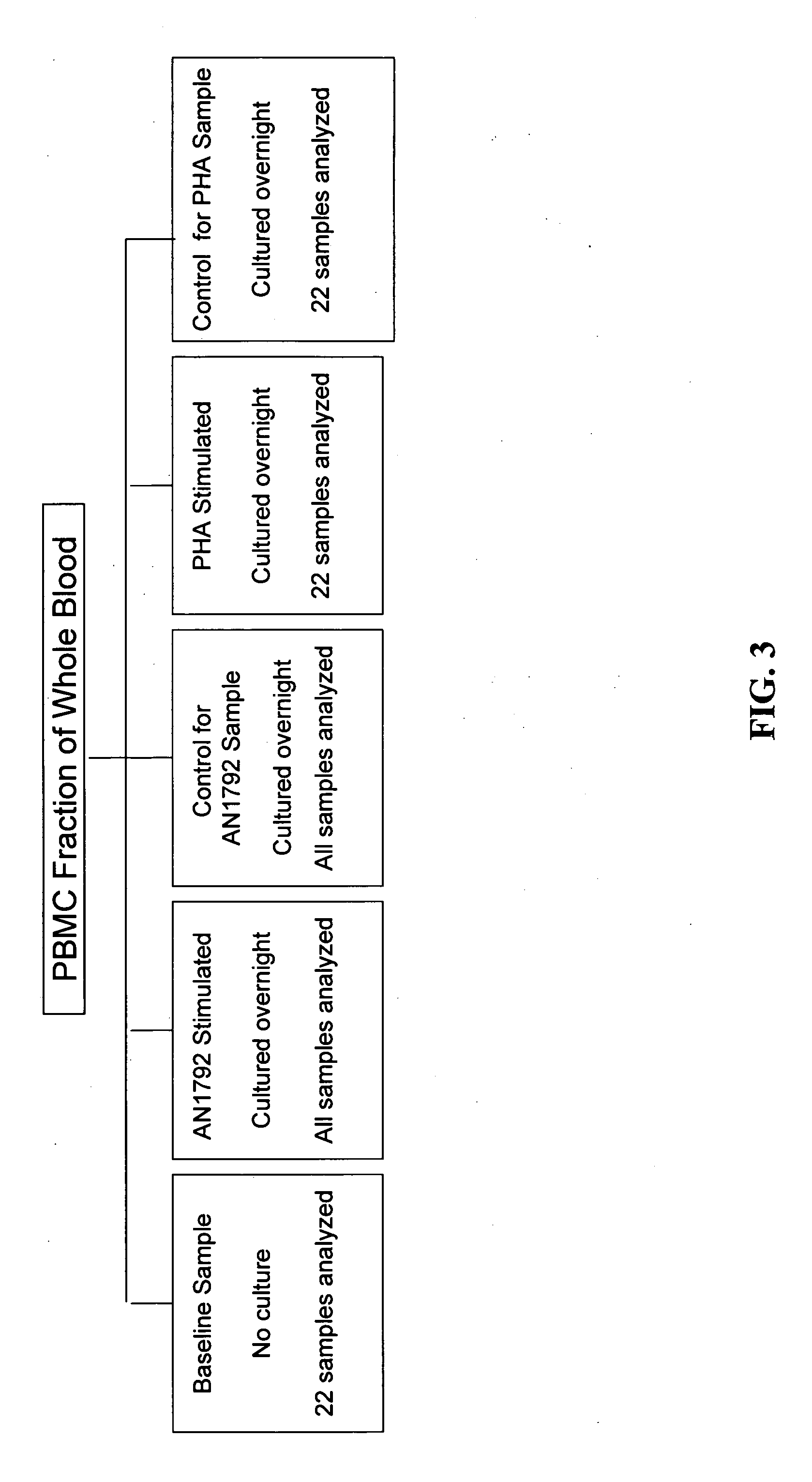Methods of identifying patients at risk of developing encephalitis following immunotherapy for Alzheimer's disease
a technology for alzheimer's disease and immunotherapy, applied in the field of improving the treatment of alzheimer's disease, can solve the problems of severe impairment and eventual death, no effective treatment for preventing, slowing, arresting, and/or reversing the progression of ad, and large heterogeneity in the way that humans respond to medications. , to achieve the effect of improving the response profile, increasing the chance of an ad patient being asymptomatic, and improving the response profil
- Summary
- Abstract
- Description
- Claims
- Application Information
AI Technical Summary
Benefits of technology
Problems solved by technology
Method used
Image
Examples
example 1
Association Between Gene Expression Patterns of in Vitro Stimulated (Cultured) Samples and Adverse Clinical Responses
example 1.1
Materials and Methods—Sample Preparation
[0206] Consent to the pharmacogenomic study was optional and obtained after approval by local institutional review boards in the U.S. (E.U. patients were not included in the pharmacogenomic study). Blood was collected from patients in the U.S. at the screening visit and was shipped overnight at room temperature to the Pharmacogenomic Laboratory in Andover, Mass. For each sample, the peripheral blood mononuclear cell (PBMC) fraction was purified by CPT fractionation, as described below, and 2×106 of these cells (the baseline sample, i.e., the first daughter sample for baseline measurements) were snap frozen; these represent cells that were not subject to in vitro culture (see. Example 1.1.3.1). The remaining cells were divided into four equal aliquots and cultured in vitro overnight in conditions described below. Cells were then harvested and snap frozen. The culturing step was performed because it was reasoned that preimmunization gene expres...
example 1.1.1
Purification of PBMCs by CPT Fractionation
[0207] Fractionation of PBMCs by CPT (cell preparation tube) fractionation was performed using a single screening visit blood sample drawn into a CPT Cell Preparation Vacutainer Tube (BD Vacutainer Systems, Franklin Lakes, N.J.). The target volume was 8 ml, but in some cases this target was not reached. Samples that were not received at Pharmacogenomics Laboratory within a day of collection were excluded from the study. Upon receipt, differential cell counts were performed. The PBMC fraction was then purified according to the CPT protocol (BD Vacutainer Systems) and differential cell count performed on the purified PBMC fraction. CPT purification resulted in greater than 99% reduction in RBC representation in all 141 study samples. CPT purification did not alter by more than 15% the percentage of monocytes relative to PBMCs. The efficiency of removal of neutrophils by CPT fractionation is shown in FIG. 2. For the samples of FIG. 2, CPT tube...
PUM
 Login to View More
Login to View More Abstract
Description
Claims
Application Information
 Login to View More
Login to View More - R&D
- Intellectual Property
- Life Sciences
- Materials
- Tech Scout
- Unparalleled Data Quality
- Higher Quality Content
- 60% Fewer Hallucinations
Browse by: Latest US Patents, China's latest patents, Technical Efficacy Thesaurus, Application Domain, Technology Topic, Popular Technical Reports.
© 2025 PatSnap. All rights reserved.Legal|Privacy policy|Modern Slavery Act Transparency Statement|Sitemap|About US| Contact US: help@patsnap.com



